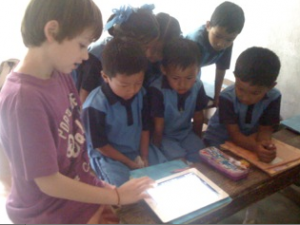One of the ways to create interactive online experiences is to use a learning management system (LMS). This is much easier than you think and is a great way to use mobile learning devices in daily classroom practice. These systems now incorporate social networking so students can create and share their learning as part of professional learning networks. There are a range of these, today I am discussing two free LMS systems designed for classroom use. Edmodo and Schoology. I am seeing excellent use of these systems in classrooms. Teachers can post tasks and assessments online in the password protected space they have created for their students. They can give parents access to sections of the site so parents can view the work. Students can access this work anywhere, anytime on a web enabled device. There are apps for Android and IOS devices like iphones and iPads. Students can post their responses to their teacher and work collaboratively with their peers. The facility to set up groups is very useful. The student work is all safely stored online, no need for complex server configurations.
Schoology
This video link guides you through how to set up a site in Schoology. Schoology has advanced features to set up test and assessments with self marking features.
This post gives more details on how to use Edmodo in education
This post on edmodo gives lots of links to schools and blog sites with practical examples of edmodo in action
This video shows how a 5th grade student uses Edmodo
Please post a comment and share how you are using these tools in your teaching and learning






